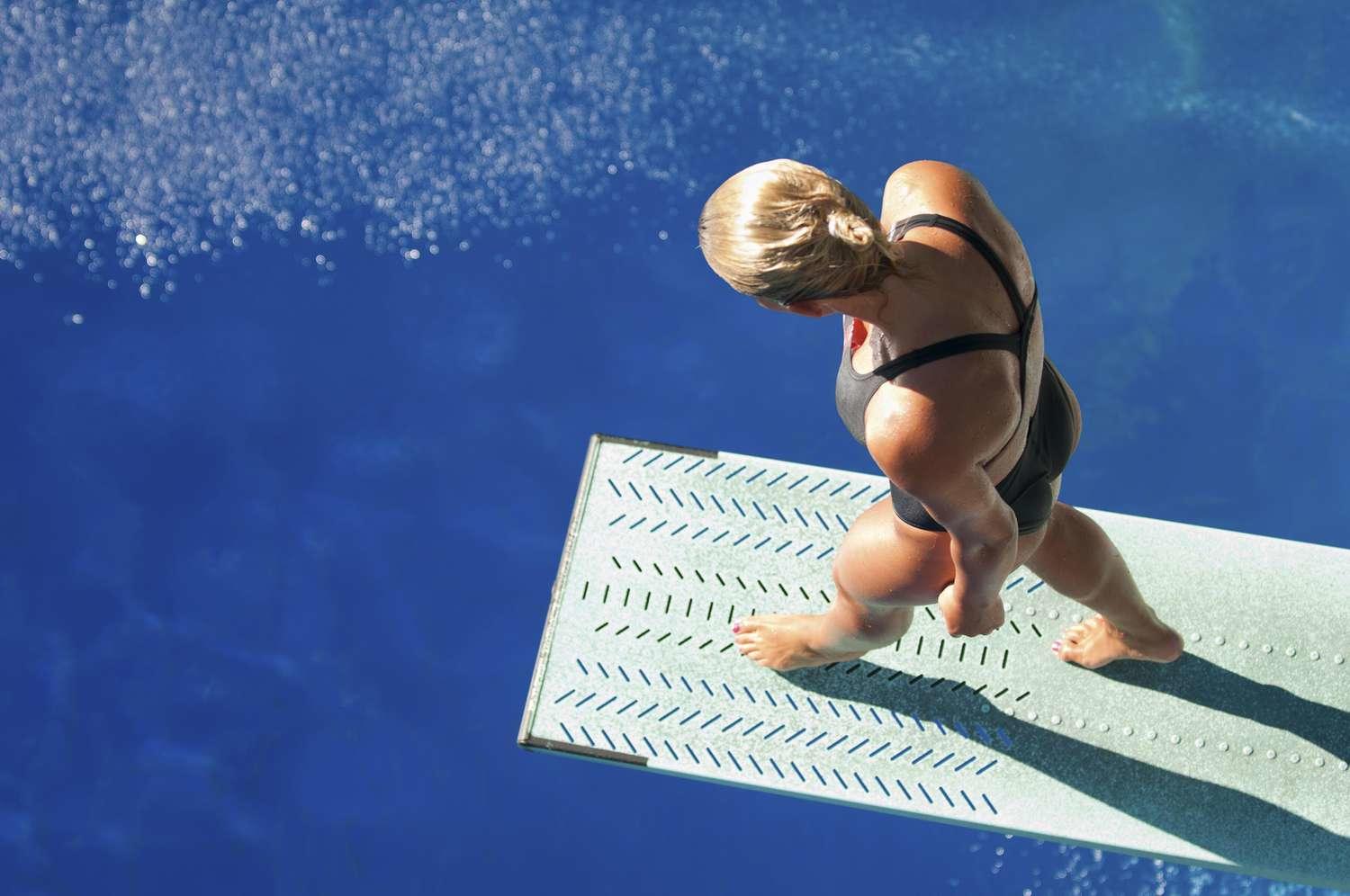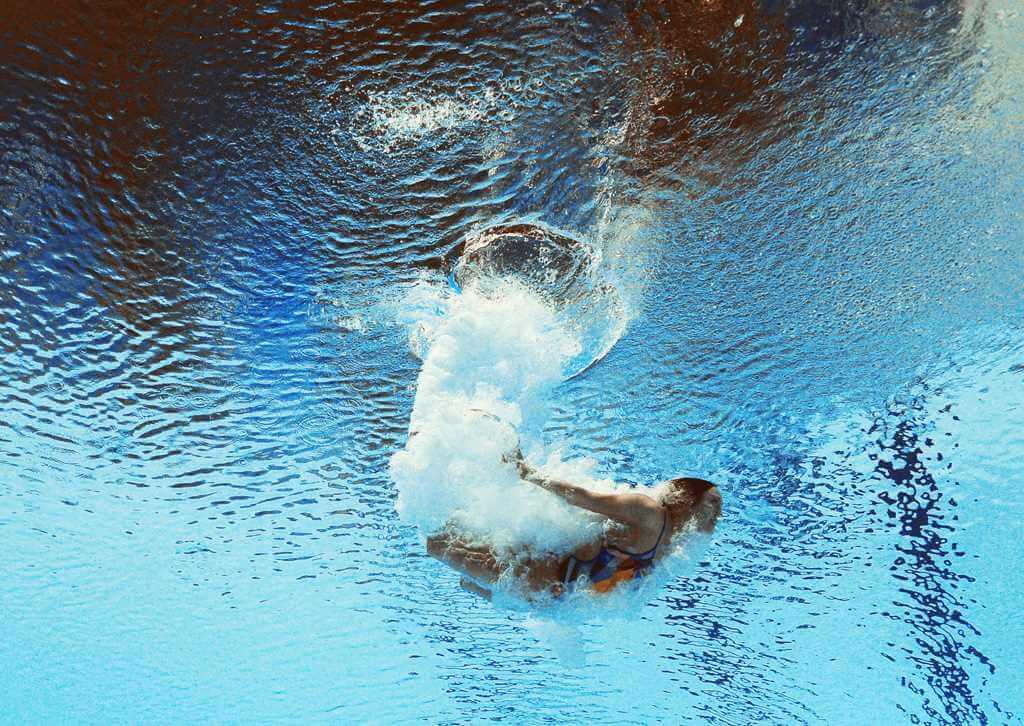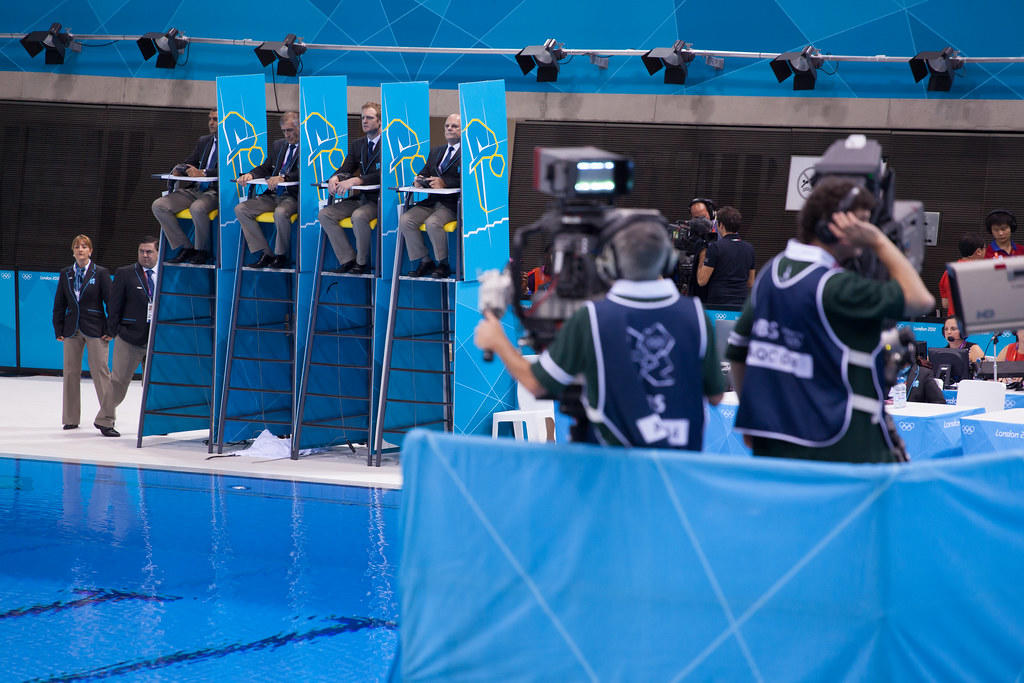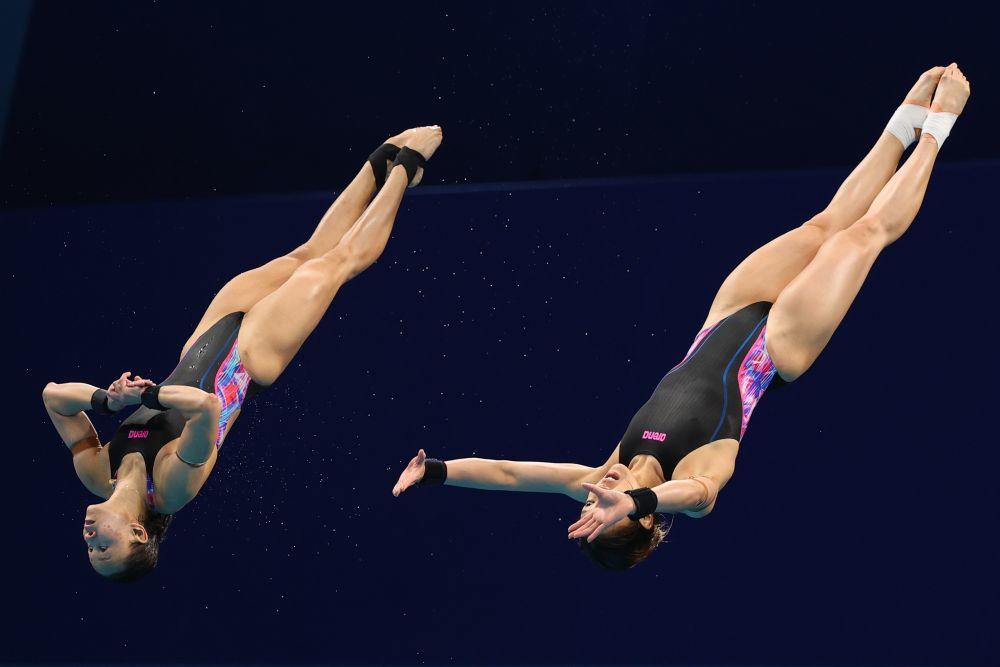We are fast approaching the season of witnessing the world's top athletes compete in sport!
There are 40 sports featured in the Olympics, with one of the most-watched sports being Olympic diving.
Did you know that a different number of dives need to be completed in the men's and women's categories?
In Olympic diving, athletes in the men's category must complete six dives, while it's five for the women's category!
This article explores the unique rules of the diving sport and the techniques athletes employ across the different diving disciplines.

When did competitive diving sport start?
Diving is an aquatic sport that made its debut in the Olympics in 1904.
Interestingly, diving was seen as an acrobatic art form before it was recognised as a competitive sport. That's because diving was said to originate from gymnastics disciplines, sometime in the early 19th century!
After its introduction to the Olympics, the diving sport quickly developed to include women's and men's categories, different springboard heights and platforms, and even synchronised diving, which involves athletes diving simultaneously from a springboard or platform.
Today, the diving sport is sanctioned by World Aquatics (formerly known as FINA) which administers all aquatic-sport-related international competitions, including Olympic diving. While World Aquatics is the governing body for aquatic sports worldwide, the organisation is also responsible for developing and encouraging the education of athletes, coaches and officials in these sports.
You can find these 8 events in Olympic diving:
- Women's individual 3-metre springboard event
- Men's individual 3-metre springboard event
- Women's synchronised 3-metre springboard event
- Men's synchronised 3-metre springboard event
- Women's individual 10-metre platform event
- Men's individual 10-metre platform event
- Women's synchronised 10-metre platform event
- Men's synchronised 10-metre platform event
Do you know the famous Malaysian divers who have made Olympic history?

What techniques are used in diving sport?
Before leaping off the springboard, athletes need to mentally prepare for the dive they will perform.
When constructing a dive, be it from a springboard or a platform, divers need to consider these three factors:
- The starting position of the dive and the direction (or approach) of the dive
- The body position for the dive
- The addition of diving techniques like somersaults or twists
The starting positions and directions in the diving sport are categorised into six groups, but only the armstand position is needed for the platform - it would be too dangerous for springboard diving! More on diving and its basic concepts here.
After taking off, the diver will assume one of these four body positions which are represented by letters:
- Straight (A): The body is kept in a fluid, straight line with no bends at the hips and knees.
- Pike (B): The body is bent at the hips but the legs are kept straight, with the lower legs nearly touching the diver's face.
- Tuck (C): Like the act of curling into a ball, the body is bent at the hips and knees, with the knees held close to the chest.
- Free (D): Applied only to twisting dives, the diver combines two or more of the other positions (e.g. straight + pike).
The free position is only applied to twisting dives as bends at the knees or hips would cause divers to receive penalties in other dive groups. By now, you are probably aware of the degree of difficulty that divers must assume when performing various movements in the air!
Do divers use any techniques when entering the water?
All divers dream of performing the ultimate water entry! This moment can only happen when the body is completely vertical to the water surface and the hands are placed securely together. This results in a "no-splash" entry, also known as a "rip" in the diving sport. It is called a rip due to the sound made when the diver executes a flawless entry - similar to when paper is ripped.


What are the basic rules of diving sport?
So far, we've looked at the events and techniques used in diving.
Are you aware of the basic rules in Olympic diving and other international diving events?
Depending on the diving event, the rules for the diving sport may vary. Here are some general rules and regulations used across most diving sport events:
- Prior to the diving event, the diver must submit a dive sheet - a list of dives they will perform in the competition. Once this sheet is submitted, changes cannot be made unless required by the meet director.
- There is a maximum number of dives that divers can perform in an event, often ranging between five to eleven dives.
- All competitive springboard diving is set at 1 metre and 3 metres above the water's surface. In Olympic diving, only the 3-m springboard is used.
- For platform diving, the heights are set at 5 metres, 7.5 metres and 10 metres. Only the 10-m platform is used in Olympic diving.
- All dives must be executed either head-first or feet-first into the water. In all cases, the body must be straight with the feet together and toes pointed upon entry.
- Entry into the water must be vertical or near-vertical.
Additionally, there are usually five to seven judges who will score the performance of the dive (individual diving events). While the judges will pay attention to the entry of the dive, they must not be influenced by the degree of difficulty of the dive when providing scores. So, they will judge only the execution of the dive and techniques used by the diver!
You will learn about these diving disciplines and more when you learn at diving schools in Malaysia.
Did you know that the highest and lowest scores from the judges are not considered in the final score? This includes Olympic diving, so let's check it out.
How is Olympic diving scored?
The score that an Olympic diving judge can administer ranges from zero (failed dive) to ten (perfect dive). As mentioned earlier, the highest and lowest scores provided by the judges are ignored while the remaining scores are added and multiplied by the dive's degree of difficulty. This degree of difficulty is denoted by its tariff.
So, the diver who can perform a higher tariff dive excellently will score higher than another diver who performs less difficult dives.
In Olympic diving, where seven judges are scoring, the remaining five scores left (after removing the highest and lowest scores) are added together and multiplied by 0.6 before multiplying it again with the dive's degree of difficulty. This helps the result to be adjusted to the mathematical equivalent of three scores, making it convenient for comparison purposes.

Enough about the math - what do the different scores mean?!
This table shows what it means to get a low to high score in Olympic diving:
| Score (Marks) | Value |
|---|---|
| 10 | Excellent |
| 8.5 - 9.5 | Very Good |
| 7 - 8 | Good |
| 5 - 6.5 | Satisfactory |
| 2.5 - 4.5 | Deficient |
| 0.5 - 2 | Unsatisfactory |
| 0 | Failed |
Already looking forward to springboard diving in the Olympics? We think you'll enjoy this recap of the highest-scoring dives in the Olympic men's category of Rio 2016.
To come up with these scores, Olympic diving judges will consider these five phases when watching a dive:
- Starting position - maintaining a steady starting position, even in an armstand
- Approach - smooth approach to the dive with no stops (known as balks)
- Take-off - power and direction of dive
- Flight - positions and alignment
- Entry - achieving a vertical dive (remember the rip!)
In synchronised diving, judges will also consider the coordinated timing between two divers! Just look at these amazing Malaysian divers who have made it to the Olympics.
Learn the disciplines of swimming with Superprof
After reading up on these cool techniques used in diving, you could be inspired to take up an aquatic sport or test out your abilities in the water!
It's never too late to take up an aquatic sport or start swimming lessons even as an adult.
Visit Superprof for one-on-one and group swimming lessons with a private tutor.
Superprof is a leading global platform that connects students to tutors of various subjects, and you can learn swimming with a private swimming instructor through this platform, too! Superprof helps you find your ideal swimming instructor by taking into account swimming tutors near you, your budget for swimming classes, your experience level in swimming and the type of lesson you are looking for (learning to float, overcoming a fear of water, teaching basic swimming skills, etc).
Here's how you can get in touch with your Superprof swimming instructor: visit the Superprof Tutors' page and choose "Swimming" as your subject (also select "Around Me" if you are looking for tutors in your area). Then, use filters such as Rate, Response Time, Distance and Level to narrow down your search for your desired swimming instructor. Finally, read through the tutors' profiles to make your final choice and sign up as a student on Superprof to secure your lesson.
We also want to mention that swimming lessons at Superprof are available for as low as RM50 per hour, even with professional swimming coaches and athletes. Get on board and use the first-free-lesson option provided by your swimming tutor! Find adult swim classes on Superprof today!















